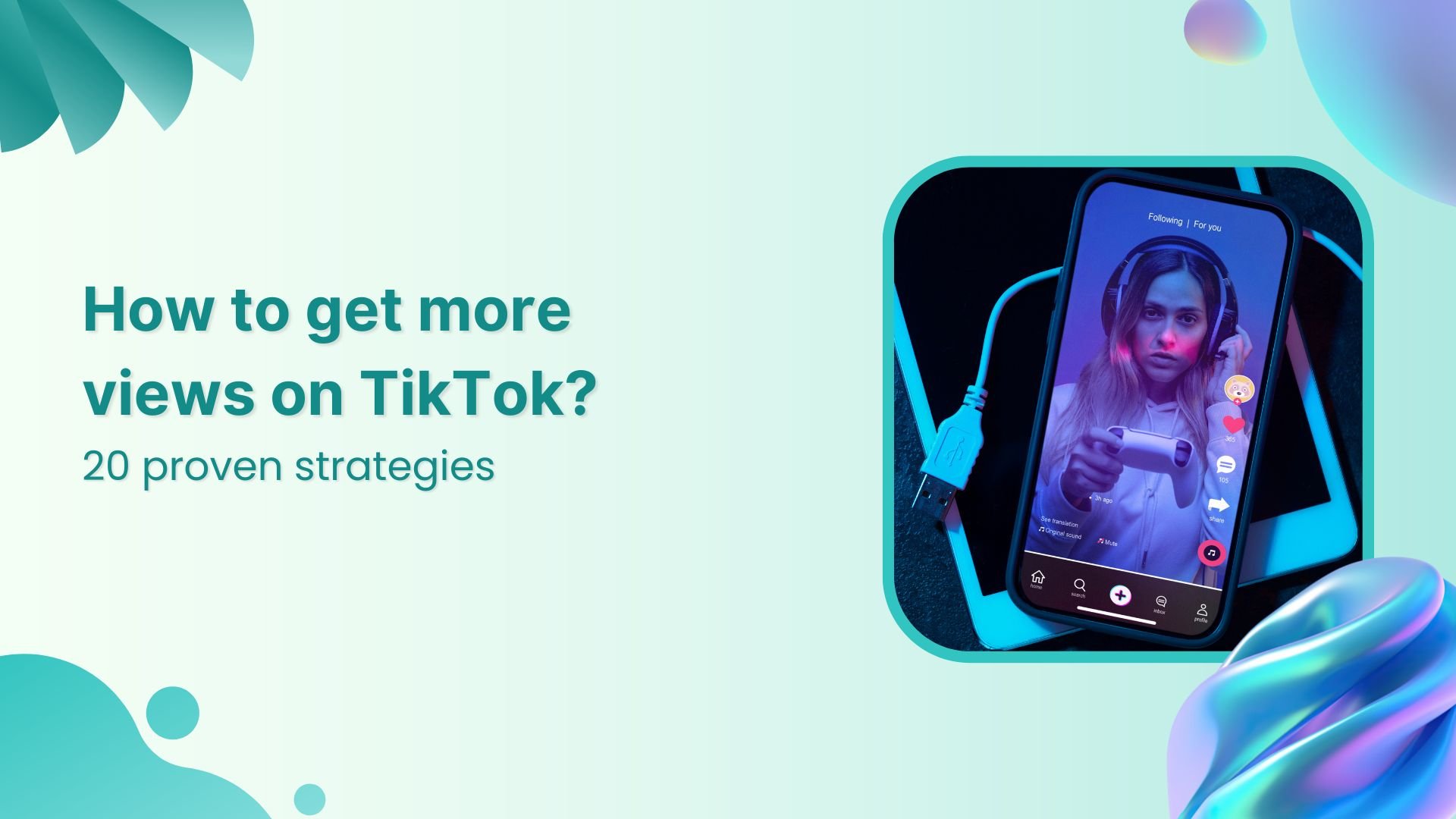Bulk-generate & schedule posts in seconds with Smart Scheduling. Try now!
Social media positioning: A useful guide for brands
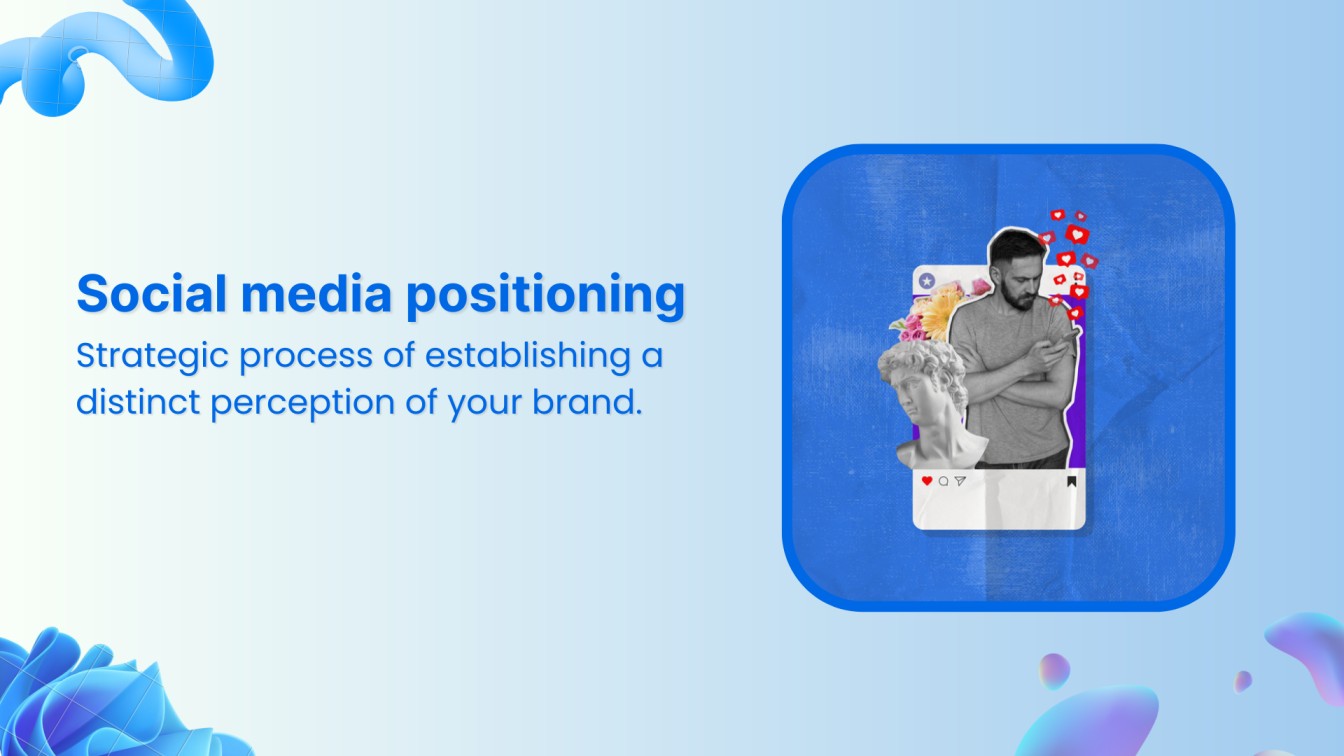
The foremost reason consumers gravitate towards certain brands over others lies in the trust these brands have meticulously cultivated over time. Establishing trust online, particularly through social media positioning, emerges as a pivotal strategy for brand recognition.
With statistics indicating a steady rise in social media usage, individuals are increasingly turning to these platforms for the latest trends and updates, to connect with loved ones, and to make informed purchasing decisions. This underscores the need for brands to strategically harness their social media presence to ensure longevity and relevance in today’s market.
This article covers the significance of social media positioning for brand trust and recognition, detailing strategies for implementing it, core elements of brand positioning, and building a social media brand presence. It also delves into the metrics used to measure the ROI of social media positioning activities.
Plan, schedule, share, and analyze content for 15+ social media channels.

What is social media positioning?
Social media positioning refers to the strategic process of shaping the perception of a brand within the social media world. It’s about carefully curating your brand’s online persona, ensuring that every tweet, post, story, or interaction aligns with the overarching image you wish to project. This involves not just the aesthetic aspects like logos and color schemes but also the tone of communication, the type of content shared, and the manner in which a brand engages with its audience. Social media positioning is a component of the broader brand positioning strategy, tailored specifically for social media platforms‘ dynamic and interactive environment.
For instance, Dove’s collaboration with Nike to launch the “Body Confident Sport” program is a prime example of leveraging social media to foster brand perception aligned with core values and social missions. This innovative program, aimed at building body confidence among young female athletes, embodies the strategic integration of a brand’s social mission into its online identity.
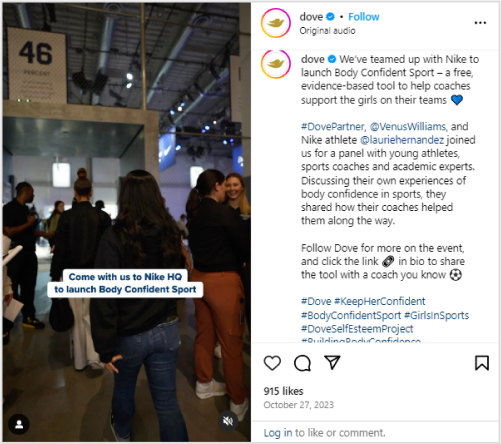
Historically celebrated for its Real Beauty campaign, Dove has seamlessly extended its advocacy for body positivity into the sports domain through this partnership. The program’s development involved contributions from diverse academic experts and feedback from girls and coaches across six countries, showcasing a commitment to inclusivity and evidence-based approaches.
By promoting the Body Confident Sport program across its social media channels, Dove amplifies its message of self-esteem and inclusion and positions itself as a brand that transcends conventional beauty norms. Through posts, stories, and engagement strategies that highlight the program’s goals, successes, and real-life impact, Dove reinforces its identity as a brand deeply invested in the well-being and empowerment of its audience.
Moreover, Dove’s strategic use of hashtags like #KEEPHERCONFIDENT and initiatives such as the #KeepHerConfident Challenge on TikTok further shows its adeptness at social media positioning. These efforts foster community engagement and drive home the message that body confidence and sports participation are interlinked.
Also Read: Guide to Hashtags for Instagram: How to Use Them Effectively
Why is social media positioning important for your brand?
With over half of the global population now active on social media, amounting to 5.04 billion individuals, and an influx of 266 million new users within the last year alone, establishing a solid social media presence transcends being merely an option—it has become an indispensable aspect of modern brand strategy.
Social media positioning plays a pivotal role in how a brand is perceived online, influencing consumer behavior and decision-making processes. Here are a few reasons why social media positioning is crucial for the success and growth of your brand.
1. Differentiation in a crowded market
Consumers are bombarded with many choices for nearly every product or service imaginable every minute they are online, going through the feed of their social media accounts. Standing out in such a saturated marketplace becomes a formidable challenge for brands. Social media positioning allows brands to effectively define and communicate their unique value proposition. By leveraging the power of social media, brands can showcase what sets them apart from competitors, whether it’s through innovation, quality, customer service, or sustainability.
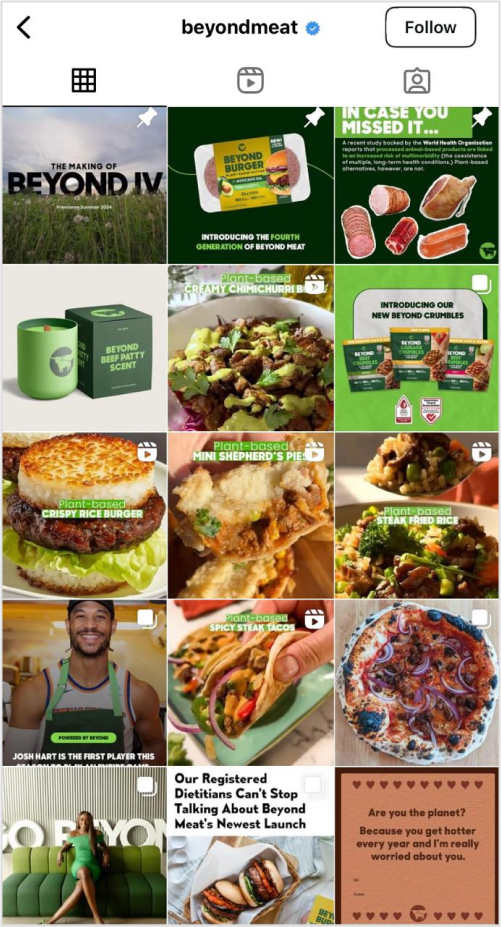
For example, Beyond Meat effectively differentiates itself in the competitive food market through strategic social media positioning. Utilizing a green color scheme and sharing versatile recipes, the brand emphasizes its commitment to sustainability and plant-based products. This focused approach highlights Beyond Meat’s unique value, attracting health-conscious and environmentally aware consumers.
2. Enhanced lead generation and sales
Social media is not just a platform for brand visibility—it’s a potent tool for driving sales and generating leads. Through strategic positioning, brands can create targeted campaigns that resonate with their audience, encouraging engagement and conversion. Running contests, giveaways, or exclusive promotions on social media platforms can significantly drive traffic to your website and increase sales opportunities. Moreover, social media allows for the segmentation of audiences, enabling brands to tailor their messages to specific groups, thereby increasing the effectiveness of their marketing efforts.
For instance, Depop, a leading second-hand fashion marketplace, has harnessed the power of social media to captivate Millennial and Gen-Z demographics, fostering a community of young entrepreneurs. Through strategic use of influencers and social media trends, alongside collaborations with celebrities like Olivia Rodrigo, Depop has revolutionized second-hand fashion’s appeal. This approach has significantly enhanced lead generation and sales, proving the effectiveness of social media in driving brand engagement and creating a vibrant, style-conscious community.
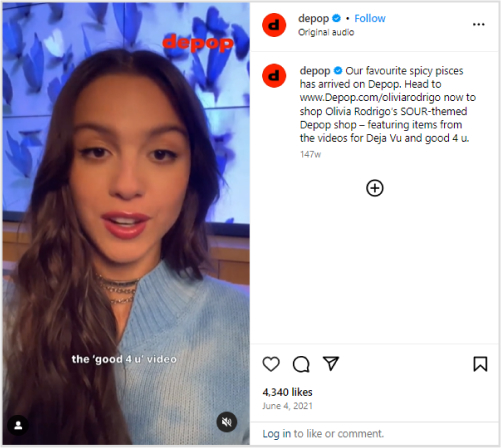
3. Provision of customer service and support
The modern consumer expects fast, accessible customer service, and social media provides an excellent platform for meeting these expectations. Through social media positioning, brands can establish themselves as responsive and customer-centric, addressing inquiries, concerns, and feedback in real time. This level of interaction improves customer satisfaction and enhances the brand’s reputation as one that cares deeply about its customers. Positive customer service experiences shared on social media can further amplify a brand’s positive image, attracting new customers.

For instance, Netflix excels in providing exemplary customer service on social media, particularly Twitter. It responds promptly within 24 hours, offering solutions and enhancing customer satisfaction. This responsiveness boosts Netflix’s reputation as a viewer-centric platform, attracting new subscribers through positive social media interactions and showcasing its commitment to user experience.
Related Read: Future of Customer Experience: 14 Ways AI is Making a Difference
4. Building credibility and authority
Regularly sharing high-quality, relevant content on social media can position a brand as an authoritative voice in its industry. This credibility is crucial for attracting and retaining customers, as consumers are more likely to trust and engage with brands that demonstrate expertise and thought leadership. Through educational posts, insightful articles, and engaging discussions, brands can build a reputation for being knowledgeable and reliable sources of information. This authority attracts a dedicated following and increases the likelihood of conversions, as consumers prefer to do business with brands they perceive as leaders in their field.
For Instance, Luxy Hair leveraged educational content on YouTube, diverging from traditional paid advertising to build credibility in the hair extensions niche. Luxy Hair positioned itself as an authoritative, trustworthy brand by focusing on high-quality hairstyling tutorials rather than direct sales. This strategy of delivering value first significantly enhanced its reputation and contributed to its profitability and longevity, proving the power of educational content in brand building.
What are the core elements of brand positioning?
Brand positioning is the strategic process of setting your brand apart from the competition in the minds of your target audience. It involves creating a unique impression that makes your brand preferable to consumers. Understanding the core elements of brand positioning is crucial for any brand aiming to establish a strong presence in the market. Here are the fundamental components, each illustrated with examples for better comprehension and expanded with additional insights:
Unique value proposition (UVP)
The UVP is the cornerstone of brand positioning. It clearly communicates the unique benefits of your product or service that are not available from your competitors. For instance, Slack’s UVP revolves around simplifying communication for teams, offering a single platform for messaging, tools, and files. This clear proposition helps it stand out in the crowded market of productivity tools. It conveys directly to potential users why Slack is the optimal choice for team collaboration, emphasizing efficiency and integration capabilities that save time and reduce complexity.
Target audience
Identifying the specific group of consumers your brand intends to serve is vital. A well-defined target audience allows for tailored marketing strategies that resonate more effectively. For example, Nike targets athletes and people aspiring to lead a healthy lifestyle, as evident in their marketing campaigns focusing on inspiration, determination, and perseverance. By understanding the aspirations and challenges of its audience, Nike crafts messages that speak directly to their hearts, encouraging them to push their limits.
Brand personality
This refers to the set of human characteristics associated with a brand, which helps connect with the audience emotionally. Apple, for instance, positions itself as innovative, stylish, and user-friendly, attracting consumers who value design and innovation. This personality is consistent across all Apple products and marketing, creating a unified image that appeals to tech-savvy consumers and design aficionados alike, fostering a loyal community of users.
Also Read: How to Build a Better Brand Reputation With Reviews?
Competitor differentiation
Understanding how your brand stands out from competitors is essential for effective positioning. Tesla differentiates itself in the automotive industry with its focus on electric vehicles and sustainability, coupled with cutting-edge technology, setting it apart from traditional car manufacturers. Tesla’s commitment to innovation and environmental responsibility not only distinguishes it from competitors but also aligns with the values of a growing segment of consumers, further solidifying its unique position in the market.
Outsmart your competition with social media competitor analysis to stay up in your social media game.
Brand promise
The brand promise is a declaration of the experience consumers can expect when engaging with your brand. Amazon’s promise is to deliver an extensive range of products quickly and at a lower price, which is encapsulated in its slogan, “From A to Z.” This promise is the backbone of Amazon’s customer service philosophy, driving operational decisions and technological innovations designed to enhance the shopping experience, thereby reinforcing trust and reliability in the brand.
Brand story
A compelling brand story enhances emotional connection and loyalty. TOMS Shoes, with its promise to give a pair of shoes to an impoverished child for every pair sold, tells a powerful story of social responsibility that resonates with consumers who want to make a difference with their purchases. This narrative is integral to TOMS’ identity, transforming customers into participants in a global movement, which generates brand loyalty and propagates the brand’s mission through word-of-mouth.
Visual and verbal identity
This includes the logo, color scheme, typography, and the style of communication that makes a brand recognizable. Coca-Cola’s iconic red color, distinctive script logo, and cheerful and optimistic messaging make it instantly recognizable worldwide. The visual and verbal identity of Coca-Cola evokes feelings of happiness and togetherness, themes that are universally appealing and timeless, ensuring the brand remains relevant and cherished across generations.
Consistency
Maintaining a consistent message across all channels is crucial to reinforcing brand positioning. Starbucks ensures consistency in its product quality, store ambiance, and customer service worldwide, reinforcing its position as a premium coffeehouse. This unwavering commitment to consistency builds a reliable brand experience that customers can trust, whether visiting a Starbucks in New York or Tokyo, fostering a global community of coffee lovers.
Experience
The overall customer experience, from the initial interaction to post-purchase, plays a critical role in positioning. Disney excels by ensuring that every aspect of its theme parks and entertainment offerings delivers on its promise of magical experiences. From the staff’s attentiveness to the parks’ immersive design, Disney creates an unparalleled world of wonder that exceeds expectations, turning visitors into lifelong fans and advocates of the brand.
How to build social media brand positioning?
Building a strong brand positioning on social media is essential for brands aiming to stand out in the digital landscape. A strategic approach to social media positioning can enhance brand visibility, foster customer loyalty, and ultimately drive sales. Here’s a comprehensive guide in steps to building effective social media brand positioning:
1. Define your brand’s core values and mission
The foundation of your social media brand positioning starts with clearly understanding your brand’s core values and mission. These should reflect what your brand stands for and the promise you make to your customers. For instance, if sustainability and environmental responsibility are core to your brand, these values should be prominently featured in your social media messaging.
Read Up: How to build a comprehensive B2B content marketing strategy
For example, Domino’s brand positioning shines through its mission and core values, emphasizing integrity, innovation, and community engagement. These principles guide every customer interaction, distinguishing Domino’s as a brand committed to ethical practices, respect, and collaboration in the food industry. This alignment attracts loyal customers and fosters genuine brand advocacy.

2. Identify your target audience
Knowing your target audience is crucial for effective social media positioning. Understand their demographics, interests, challenges, and the social media platforms they frequent. This information will guide you in tailoring your content and interactions to meet their expectations and resonate with their preferences.

Target adeptly identifies and targets its diverse audiences on social media by customizing its content for different platforms. It engages millennials on Twitter with a relaxed tone, while on Facebook, it targets families, partnering with celebrities like Jessica Alba. This strategic audience differentiation boosts engagement and drives sales, showcasing the importance of precise audience identification in effective social media positioning.
3. Analyze your competitors
Conduct a thorough analysis of your competitor’s social media presence. Identify their strengths and weaknesses, the type of content they publish, and how they engage with their audience. This will help you find opportunities to differentiate your brand and highlight your unique value proposition.
You can conduct a thorough competitor analysis using ContentStudio’s competitor analytics feature.

For instance, if we analyze the two global giants in the sportswear industry, Nike and Adidas, it is revealed that they both have two distinct social media strategies: Nike focuses on emotional storytelling and influencer partnerships, boasting 20.5M cross-channel engagement while facing ethical criticisms. Adidas emphasizes sustainability and inclusivity, engaging with social causes, yet struggles with high pricing perceptions and a narrower product range. This comparison underscores the importance of a nuanced social media approach to highlight unique brand strengths and address potential weaknesses for competitive differentiation.
4. Develop a unique value proposition (UVP)
Your UVP is what sets your brand apart from the competition. It should clearly state why customers should choose your brand over others.
Walmart’s Unique Value Proposition (UVP) is masterfully crafted around simplicity, affordability, and quality, positioning itself as the go-to supermarket for lower and middle-class shoppers without excluding the broader market. By consistently offering discounts and maintaining a reputation for low prices, Walmart distinguishes itself from competitors who may offer similar deals. Its wide product range appeals to customers across various demographics, while its efficient supply chain management ensures quick product delivery, keeping prices competitive.
Related Read: How to Grow Your Online Business in 2024

5. Create a consistent brand voice and aesthetic
Consistency is key to building brand recognition and loyalty. Develop a consistent brand voice and aesthetic that aligns with your brand’s personality and values. This includes using consistent colors, fonts, and imagery and maintaining a uniform tone in your content and interactions.
https://www.instagram.com/reel/Cxxt1d8I1rm/?igsh=MXBybG44Z2NzOTZ3bQ==
L’Oréal Paris exemplifies the importance of maintaining a consistent brand voice and aesthetic across all its marketing channels, firmly embedding its empowering mission, “We’re Worth It,” into the core of its identity. This mantra transcends mere advertising, a declaration of L’Oréal’s commitment to empowering women to recognize and celebrate their inherent beauty. The consistent use of this powerful tagline, alongside messaging that champions self-belief and empowerment, ensures that L’Oréal’s communications resonate deeply with its audience.
6. Engage actively with your audience
Engagement builds relationships and fosters a sense of community around your brand. Respond promptly to comments, messages, and mentions. Encourage discussions and feedback, and show appreciation for user-generated content that aligns with your brand. Genuine interaction boosts your brand’s credibility and affinity.

Starbucks sets a stellar example of audience engagement by mirroring its in-store hospitality online, especially on Twitter. In responding to every mention, whether praise or critique, Starbucks demonstrates its value on customer interactions, fostering a loyal community and enhancing brand credibility through consistent, genuine engagement.
7. Utilize influencer partnerships
Partner with influencers who share your brand values and have a genuine connection with your target audience. Influencers can help amplify your brand’s message, reach a wider audience, and lend credibility through their endorsement. Choose partnerships wisely to ensure authenticity and alignment with your brand identity.

For instance, Dunkin’s collaboration with e.l.f. Cosmetics and the “America Runs on Munchkins®” campaign, featuring Ben Affleck and rapper Ice Spice, showcase the power of influencer partnerships. By aligning with influencers who embody Dunkin’s brand values, they successfully broadened their audience reach and rejuvenated a legacy slogan. This strategy highlights the importance of authenticity and strategic alignment in influencer collaborations, proving that the right partnerships can significantly amplify a brand’s message and cultural relevance.
8. Promote across multiple channels
While it’s important to focus on platforms where your target audience is most active, promoting your brand across multiple social media channels can expand your reach. Tailor your content to suit the format and audience of each platform while maintaining a consistent brand message.
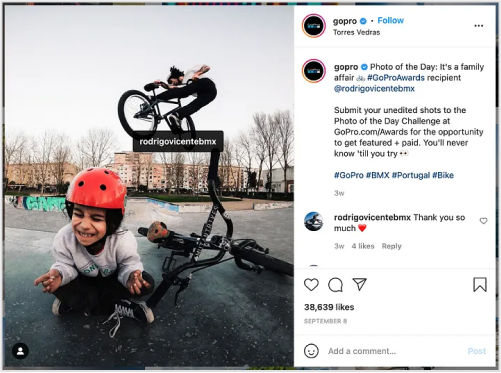
For instance, GoPro masterfully promotes its brand across social media channels, including Instagram, Facebook, X, and TikTok, reaching over 35 million followers. GoPro has become synonymous with adventure and action sports by leveraging visually compelling and user-generated content, along with engaging initiatives like competitions and a “Photo of the Day” series. Tailoring content for each platform’s audience while maintaining a consistent brand message, GoPro effectively amplifies its reach and solidifies its adventurous brand identity.
9. Highlight customer testimonials and success stories
Customer testimonials and success stories are powerful tools for building trust and authenticity. Share these stories on your social media to showcase the real-world value of your brand. This reinforces your brand positioning and encourages potential customers to take the next step.
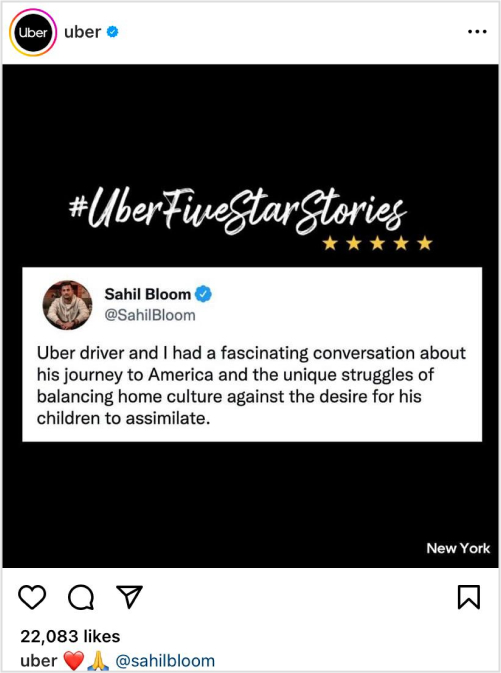
Uber effectively showcases customer satisfaction by sharing #UberFiveStarStories across social media, highlighting positive experiences and success stories. This approach bolsters Uber’s reputation as a reliable transportation service, building trust and authenticity. By spotlighting real-world testimonials, Uber strengthens its brand and encourages new customers to engage with their service, demonstrating the impact of customer feedback on brand positioning.
How to measure the ROI of social media positioning activities?
Measuring the Return on Investment (ROI) of social media positioning activities is crucial for brands to understand the effectiveness of their strategies and make informed decisions about future marketing efforts. Here’s a guide to the key parameters for measuring the ROI of social media positioning:
- Engagement rate
Engagement rate is a fundamental metric that reflects how actively your audience is involved with your content. It includes likes, comments, shares, and saves. A high engagement rate indicates that your content resonates well with your audience, contributing positively to your brand positioning.
How to calculate the engagement rate? Here’s a quick formula (Total Engagements on a Post / Number of Followers) * 100.
- Reach and impressions
Reach measures the number of unique users who have seen your post, while impressions track how often your content is displayed, regardless of clicks. These metrics help gauge the spread of your social media positioning efforts. An increase in reach and impressions suggests growing brand awareness. While there’s no manual calculation for reach and impressions, they can be accurately measured using a social media analytics tool. These tools provide comprehensive data, showing how far your content has traveled and how often it’s been viewed.
To measure: Utilize the analytics dashboard of the social media platform in question, where both metrics are readily provided. Monitoring fluctuations in these numbers over time can offer valuable insights into the visibility and frequency of your content’s appearance to users.
- Conversion rate
This metric indicates the effectiveness of your social media activities in driving desired actions, such as sales, sign-ups, or downloads. A higher conversion rate signifies your social media positioning successfully encourages your audience to take action.
To calculate: (Number of Conversions / Total Interactions with CTA) * 100.
- Customer acquisition cost (CAC)
CAC is the cost associated with acquiring a new customer through social media. Monitoring CAC helps assess the efficiency of your social media positioning in attracting new business at a sustainable cost.
To calculate: Total Costs of Marketing Efforts / Number of New Customers Acquired.
- Customer Lifetime Value (CLTV)
CLTV represents the total revenue a business can expect from a single customer account throughout its relationship with the brand. Understanding CLTV in relation to CAC provides insight into the long-term value generated by your social media positioning activities. A high CLTV compared to CAC indicates a healthy return on investment.
To Calculate: Average Purchase Value * Purchase Frequency * Customer Lifespan.
- Brand sentiment analysis
Brand sentiment analysis involves evaluating the emotions and opinions expressed by your audience regarding your brand on social media. This qualitative metric offers insights into public perception and the impact of your social media positioning on brand image. Tools like social listening platforms can automate this process, providing valuable data on brand sentiment trends.
To measure: It utilizes social listening tools to aggregate sentiment. It is not a direct formula, but the analysis provides insights into positive, neutral, or negative sentiments.
- Traffic to website
Tracking the amount of traffic directed to your website from social media platforms is essential for understanding the role of social media in your overall marketing strategy.
To measure: Use analytics tools to monitor referral traffic and assess how effectively your social media positioning drives users to your website.
- Social share of voice (SSoV)
SSoV measures your brand’s visibility and mentions in the social media landscape compared to competitors. It gives you an idea of how much of the conversation your brand owns versus your competitors, indicating the effectiveness of your social media positioning in capturing audience attention.
To calculate: (Your Brand’s Mentions / Total Industry Mentions) * 100.
The metrics detailed above, from engagement rate to Social Share of Voice (SSoV), lay the foundation for evaluating the success and impact of your strategies. However, the challenge often lies in aggregating, analyzing, and interpreting these metrics. This is where social media management tools like ContentStudio become indispensable.
ContentStudio simplifies the complex task of tracking the necessary metrics to calculate the ROI of social media positioning activities. ContentStudio provides real-time insights into engagement, reach, impressions, and more by offering a unified dashboard that integrates analytics across multiple social media platforms. Its ability to generate detailed engagement stats, identify top-performing posts, and conduct competitor benchmarks, coupled with customizable and automated reporting features, means you can easily measure the effectiveness of your social media efforts.
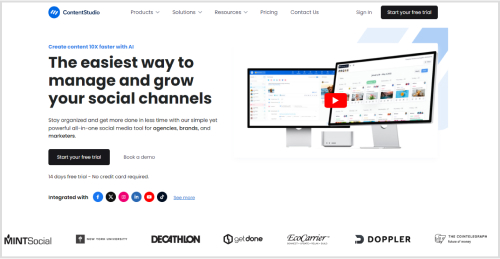
Moreover, ContentStudio’s support for multi-channel social analytics, customizable date ranges, and group reports ensures a comprehensive understanding of your social media strategy’s performance. With its white-label reporting, you can even personalize the analytics reports with your brand’s colors and logo, making it easier to share insights with stakeholders.
Conclusion
The essence of social media positioning lies in its power to shape perceptions, foster community, and drive engagement. By embracing the principles and strategies discussed, brands can leverage social media as a marketing tool and cornerstone of their brand identity and customer relationship building.
As we move forward, the brands that thrive will be those that recognize the value of connecting authentically with their audience, demonstrating their unique value, and measuring their success with precision and insight.
Frequently asked questions
How do you position your brand on social media?
To position your brand on social media, define your unique value proposition, target audience, and brand personality. Create content that resonates with your audience, maintain a consistent brand voice and aesthetic, and engage actively with your followers.
What is a social media guidelines brand guide?
A social media guidelines brand guide outlines the standards for your brand’s presence on social media. It includes tone of voice, visual style, engagement protocols, content themes, and guidelines for handling negative interactions or crises on platforms.
How do I create a brand guide for social media?
To create a brand guide for social media, start by defining your brand’s mission, vision, and core values. Include your brand’s voice, tone, visual elements (logos, color palette, typography), content types, hashtag usage, and engagement and customer service guidelines.
Recommended for you

Reputation management strategy in 2026: What every business needs to know


Powerful social media management software
14-day free trial - No credit card required.


